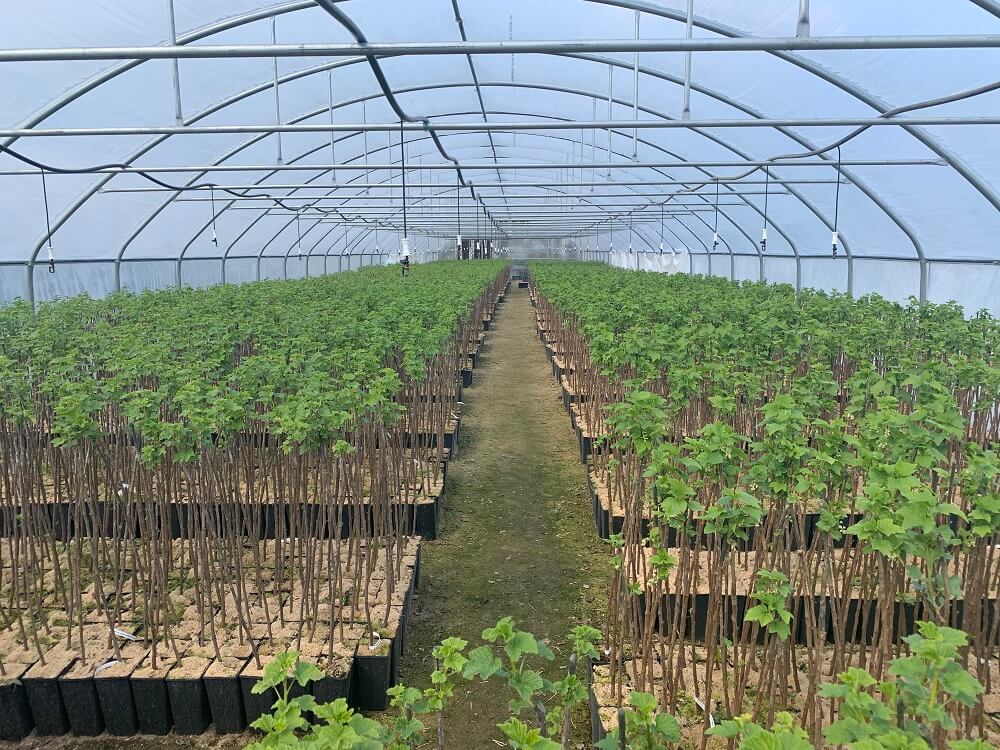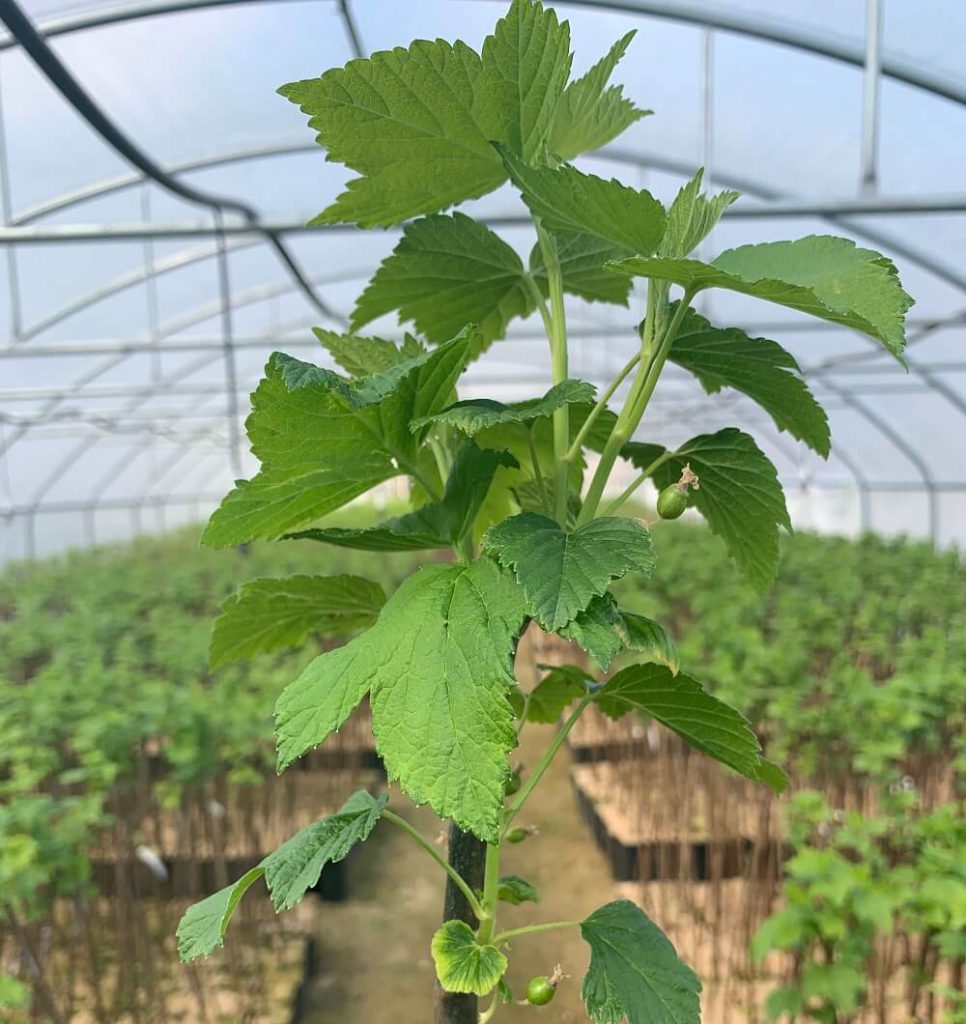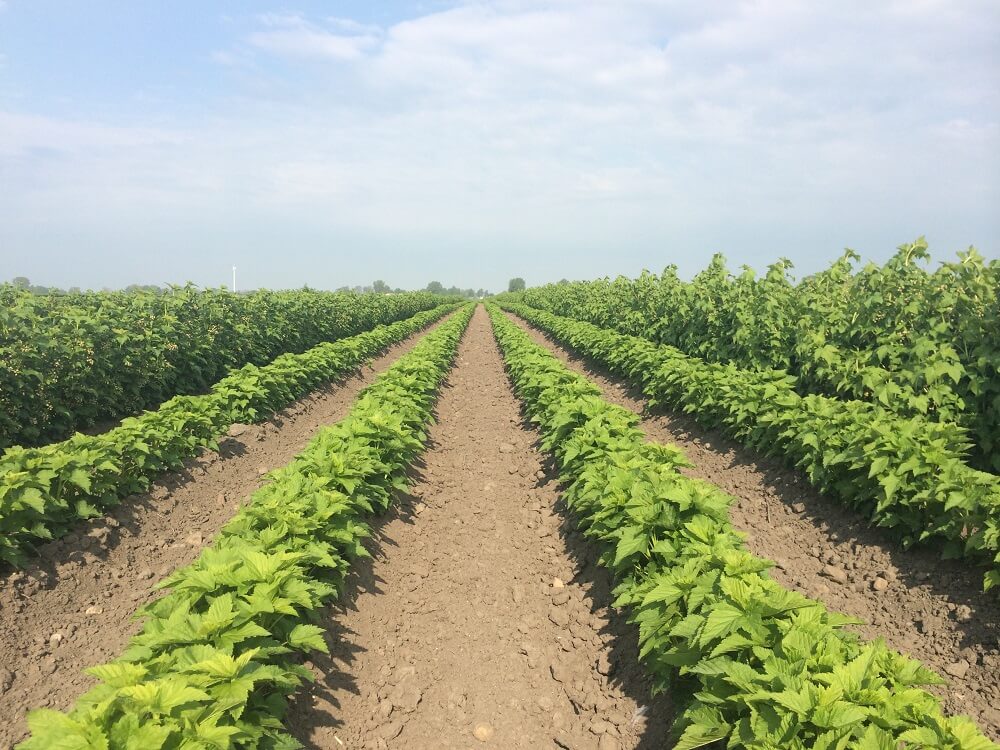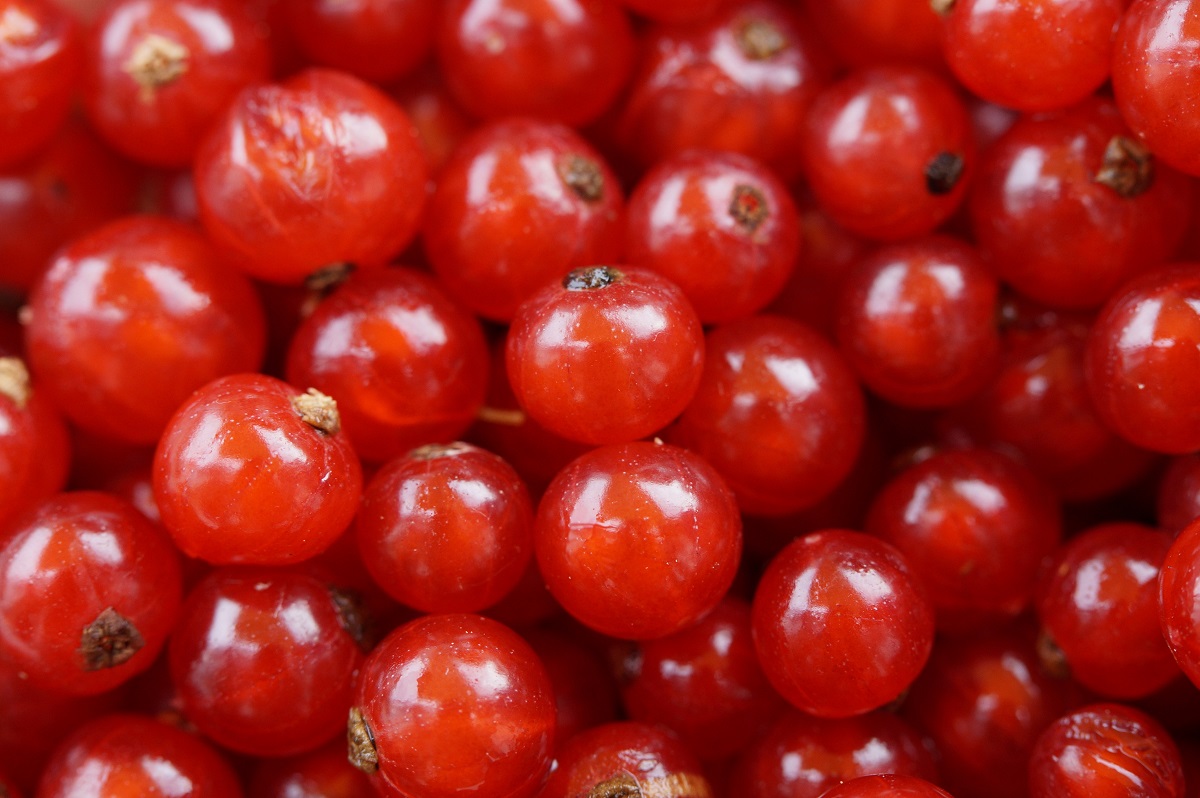The redcurrant seedlings we sale, are derived in the process of vegetative reproduction which gives us more options. We have decided to cultivate both traditional bushes as well as vines; we immunize them on the rootstock of a golden currant which is known to be very resilient.
Thanks to the fact that our farm is equipped with modern gardening tunnels, we are able to conduct the immunization process despite of how time- consuming it is. Redcurrant seedlings in the form of vines will not only be pleasant looking but also very practical- their final shape is much easier to maintain, also the fruit picking later on is much easier.


We sell seedlings in both shrub as well as vine forms, mainly as annual plants. In the case of vines, we sell size C-2 plant pots but we also offer biennial plants in form of shrubs. The root system in plants on sale is one of the most important aspects; every one of them should be well developed. All plants are trimmed before transportation, not only to make it easier but also because that will help them branch out nicely later on.
The price per unit depends on how big the entire order is, the selected variety and the age of the plant. We are always happy to advise you and we are always open to negotiation.
Redcurrant types
| Name | Florescence | Harvest/Yielding | Frost-resistance | Disease-resistance | Variety/Type | Fruit |
| Detvan | early | high | very high | very high | for processing | large, dark red, very tasty |
| Jonkheer van Tets | early | high | high | rather high | for processing, for desserts | very large, cherry red, rather sour |
| Rondom | medium | very high | high | high | for processing | large and medium, bright red, sightly acidic |
| Rovada | late | very high | high | rather high | for processing, for desserts | large, red, sightly sour, tasty |
1. Detvan
Detvan is a result of crossing Jonkheer van Tets with Heinemans Rote Spatlese. This Slovak variety is incredibly fungus- resilient. Detvan is pretty much autogamous. The branches of this particular redcurrant type, are quite tight but the shrub is rather broad; the annual stems are strong and grow upwards, the biennial stems are solid and branch out. The leaves are considerably large, their color vivid green, the edges slightly curled up. This plant is characterized by early florescence. Detvan variety bears fruit that grows in medium- long bunches (20- 22 berries per bunch); the berries are dark- red, round, of a 1 cm diameter. The berries will ripen evenly and be of very good quality. Detvan berries are recommended for direct consumption but also for processing. The harvest time is the first ten days of July- so quite early. Detvan is very easy to cultivate which is why it is widely recommended to both hobbyists and professional growers.
2. Jonkheer van Tets
This Dutch variety of a redcurrant was created in the year 1932, by crossing Fay and Scotch. But it wasnʼt until 1968 when Jonkheer van Tets started being recommended for mass farming. In the Netheralands, it is often grown as a hedge. The shape of its shrub is round- like, slightly flattened. With time, the plant loosens a bit. Jonkheer van Tets grows strong, and the stems growing out of the roots face upwards. The leaves are five- lobed, small or medium in size, asymmetrical and of dark- green color. The edges of the leaflets are curled up which makes the leaves slightly boat- shaped. The biennials bloom best. The Jonkheer van Gets berries are large, round and cherry- red; they grow in tight, long bunches. The fruit located at the top of the bunch is bigger, and the closer to the bottom, the smaller it grows. The best time for harvest is not long and it is just the last days of June. The fruit is best eaten fresh; it doesnʼt do well with transportation and storage.
3. Rondom
This redcurrant variety hails from the Netherlands. It is a hybrid of R.Multiflorum and Gestisteel. It was introduced to the market in the year 1949 and is an exceptionally high- yielding plant. Rondom grows strong, the shrub is tight and has the shape of a flipped cone; the stems grow upwards. The annual stems are very decorative: vividly green, with bright red smudges throughout the surface. The leaves are five- lobed, medium or large, and grow out of the stems at a sharp angle. They are leather- like, stiff and slightly bent upwards, along the main vein. The berries of the Rondom variety can be uneven- varying in size from small to large; they grow in long, tight cylindrically shaped bunches. The peel is thin, light red and transparent, showing the seeds. The berries are of an intensive, slightly sharp taste. The harvest time falls at the end of July and is definitely an easy one- machine picking will be just fine. Rondom redcurrant is popular mainly because of its late ripening time which significantly prolongs the currant season.
4. Rovada
This redcurrant variety also originates in the Netherlands and is a hybrid between Fayʼs Prolific and Heinemannʼs Rote Spatlese. It is exceptionally cold-resistant and can withhold any fungus diseases that usually attack currant plants. The shrub grows strong and is of a wide, loose, branched- out shape; it can grow up to 180 cm. Rovada prefers some shade combined with light sun exposure. The leaves are large, deep red, growing in relatively long, tight bunches. The taste is slightly sour, resembling the traditional redcurrant taste one might expect. The harvest time of Rovada falls on the cusp of July and August, the yielding is very high and regular. The fruit is best eaten fresh or used in pastries, but it is just as good processed. Both the berries and the bunches are quite large so hand picking would be the preferred method.
Morphology of the redcurrant
Redcurrant is a shrub that is a member of the gooseberry family; it can reach the maximum height of 200 cm. The shape of this plant is rather loose, branched- out. The stems are of a greyish- brown color and thornless. The leaves of a redcurrant are arranged spirally on the stems and grow at a sharp angle; usually they are three-, four- or most frequently, five- lobed. The lobes are not always symmetrical- depending on the redcurrant variety. The same is true for the size of the leaves- some bushes might have small or medium large leaves. The color of the leaves might be dark green or vivid- green, frequently with a fuzzy surface and edges slightly curled upwards.
What is typical for a redcurrant is the fact that the length of the leaf blade is equal to the length of the petiole. Redcurrant is a perennial plant, and its blooming period falls between May and June. The flowers of a redcurrant are greenish- yellow or reddish, their size: 8- 9 mm, they grow in bunches and are dioecious. The receptacle is convex. The flowers are small, with even petals, among which there are thecae, laid out tightly next to one another- their function is not decorative. The distinctive fruit of the redcurrant can be of any shade of red, from light to dark, and is almost transparent- like. The taste can be sharp and sour or tart, with a slight tint of sweetness. The residue of inflorescence might be small or large, but is usually is dark in color. The berries can be small, medium or large but are always clustered in bunches which-depending on the variety- have different length; they are usually rather dense.

